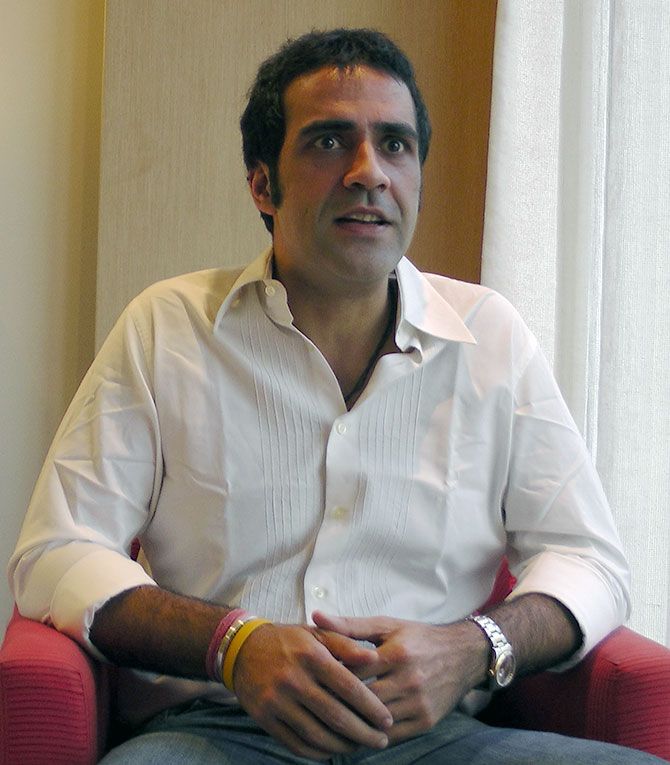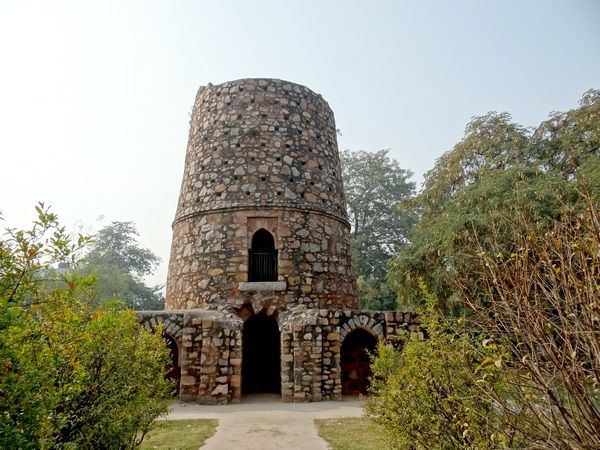'On both sides of our cultural divide, it roused strong emotions that had very little to do with the language and its literature.'
'I felt Sanskrit had been removed from the realm of thought, and made an object of politics and piety, of oppression, of reverence and contempt.'
'It was my aim to avoid these things, and go straight to the language which, as an object for the mind, is among the most exquisite ever made.'
Aatish Taseer first rose to prominence with his translation of Saadat Hasan Manto's short stories.
His subsequent work -- a semi-autobiographical account of his journey into Islam, Stranger to History: A Son's Journey through Islamic Lands (2009) was hailed as a seminal piece of literature, while Temple Goers and Noon (the novels that followed) received ample praise too.
Nobel Laureate V S Naipaul hailed Taseer as 'a young writer to watch.'
Taseer, who has often admitted to being in awe of Naipaul as a writer, revealed that his writing is somewhat inspired by Naipaul's.
Interestingly, that is not where the resemblance between the two men ends.
Exhausted after a day of back-to-back interviews in Mumbai to promote his new book -- The Way Things Were, Taseer, dressed in a crisp white shirt and denims, braces himself for another (and presumably the last one for the day) interview at the Trident hotel at the Bandra-Kurla Complex, northwest Mumbai.
To his utter dismay, the conversation is not restricted to his book -- the interviewer, Nishi Tiwari/Rediff.com, wants to know his views on Pakistan's current situation (his father Salman Taseer was governor of Pakistan Punjab and was assassinated for his progressive views; Aatish has written widely about the country's socio-politics during his journalistic career) and India's literary scene as well.
It doesn't help matters when the interviewer lets the writer know early on during the interview that she has just started reading The Way Things Were.
In this interview, conducted via e-mail in parts, Taseer speaks about, well, his new book (but the interesting parts are where he talks about other things).

How did your association with Sanskrit begin? What is its place, according to you, in India's current cultural landscape?
It began from a simple desire to go further into India's literary past than my education permitted me to.
I thought it strange that a man who grew up in a certain geographical area, and who wished to be a writer, should not be able -- or, even, encouraged -- to read the work of writers who had come before him, men who had been engaged in literary production in that very same geographical area.
In places with fewer historical disturbances, this would seem a very natural thing. In India, it was full of a political and historical charge.
Sanskrit had become more a symbol than a language and, on both sides of our cultural divide, it roused strong emotions that had very little to do with the language and its literature.
I felt that, like those books that people ban without reading, Sanskrit had been removed from the realm of thought, and made an object of politics and piety, of oppression, of reverence and contempt.
It was my aim to avoid these things, and go straight to the language which, as an object for the mind, is among the most exquisite ever made.
Apart from its exhaustive usage of a classical Indian language, The Way Things Were intertwines the lives of its protagonists with India's socio-political milestones over 40 years. How was it conceived?
It was conceived as all real novels are conceived: From a single pregnant image, in this case Skanda (the protagonist) bringing Toby (his father) back to be cremated in Kalasuryaketu.
In this case, if one (the writer) stays with his image and does not falsify its logic, it begins to reveal its history, its tension.
Other characters become attached, other images; it becomes possible to tease out a narrative. There was no research of the kind that the word implies.
I simply became interested in certain things and followed a vein of interest till exhaustion. I read around my area of interest.
We live in an age jam-packed with information. A writer must protect himself (and his work) from this kind of overload; he must keep his process instinctive and organic.
He must not feel that just because anything today might be potentially researched, anything and everything is his material.
His 'research' must form part of his natural growth, it must answer a need in him.
One of the writer characters in the book, Vijaipal, appears to be inspired from V S Naipaul. We encounter a similar character in The Temple Goers. What have been your biggest learnings from Naipaul as a writer?
The character of Vijaipal now exists independently in my mind. He serves the role of a witness, he has a kind of authority. And because, as you point out, he is already part of my imagination, I no longer need the external world to add to him.
This is a very important thing to remember about models. They matter only up to the point of creation; once the character crosses the line into fiction, he ceases to have a relationship with the model. He comes under the laws of an imaginary world.
Now, for your other question, about V S Naipaul -- to whom I owe a great debt, too great to recount in full here -- I would say that his main contribution to my writing life has been his insistence on the value of a moral centre.
Before you get the wrong idea, this is not morality in the standard sense. Not the morality of religions and society, but the morality of the artist.
Very early on, through the example of his life and his words, he stressed the importance of this: Of the need to work out of one's own truth, of protecting one's originality, of not fitting one's thoughts and experiences to the mould of other people's thoughts and experiences.
At first, I didn't quite know what he meant, but, more and more, I am struck by the simple dazzling truth of what he told me some years ago.
How much of The Way Things Were is autobiographical? If I'm not wrong, you started writing it shortly after the assassination of your father, Mr Salman Taseer.
It is the least autobiographical of all my books.
Obviously, all writers will divide themselves between their characters, but there is no one character in the book to whom I can match myself. And yes, I began writing soon after my father was killed, but what has that got to do with anything?
My father was killed in an act of political violence in a country whose religious and political landscape has little to do with India's; Toby dies naturally in a hospital in Geneva. I am sorry, am I missing something?
People say a writer's first book is always his most autobiographical work. And you have written several by now. Do you think the autobiographical motifs dilute gradually as book titles stack up?
Seeking inspiration from real life is very different from writing an autobiographical book.
You should seek inspiration from real life; it will eventually be the source of your fiction.
We live in the super interesting age of literary self-portraiture with writers like Ben Lerner, Karl Ove Knausgard and a lot many others who are writing about their reality in detailed ways.
And self portraiture is not considered a form of art which is absurd because, if you don't have an imagination, how are you doing it at all?
So I don't agree with that.

Photograph: Nirdesh K Singh
You have grown up in Delhi, a city that has served as a backdrop in your fiction, including your second novel Noon, and you have written incisively about it. What is your own relationship with Delhi like?
Its actual physical landscape -- the heaviness of its trees, the city at dusk, the December fog -- holds great power for me.
It can stir memory. On the level of people, my relationship is more complicated.
It's a city full of acquaintances, but few friends. And yet there are moments -- such as on festivals and weddings, or the other night at the anniversary of a politician, an evening of whisky and kebabs, fog and fairy lights -- when, on some abstract level, I feel a great love for its people too.
But maybe this is nothing more than the excitement that any artist or writer feels at being near his material.
I also find it an amazing city to work in; it makes no demands on me; the months roll by like hours and days, the books get written.
There is no city in the world I like more to come back to than Delhi.
Some people took offence with your portrayal of New Delhi's upper crust...
It's not true.
I don't know a writer alive who doesn't have models. Characters don't come out of thin air. People think that because it talks about a world familiar to them, they know the people in the books. That's not how it works.
You have models; they enter fiction and become different people. It's really futile to keep looking back at the real world in the hope of figuring it out. It's not the way the imagination works.
Part II of the interview: 'India is a semi-literate country and Chetan Bhagat is the best it can do'
Aatish Taseer's photograph: Afsar Dayatar/Rediff.com










